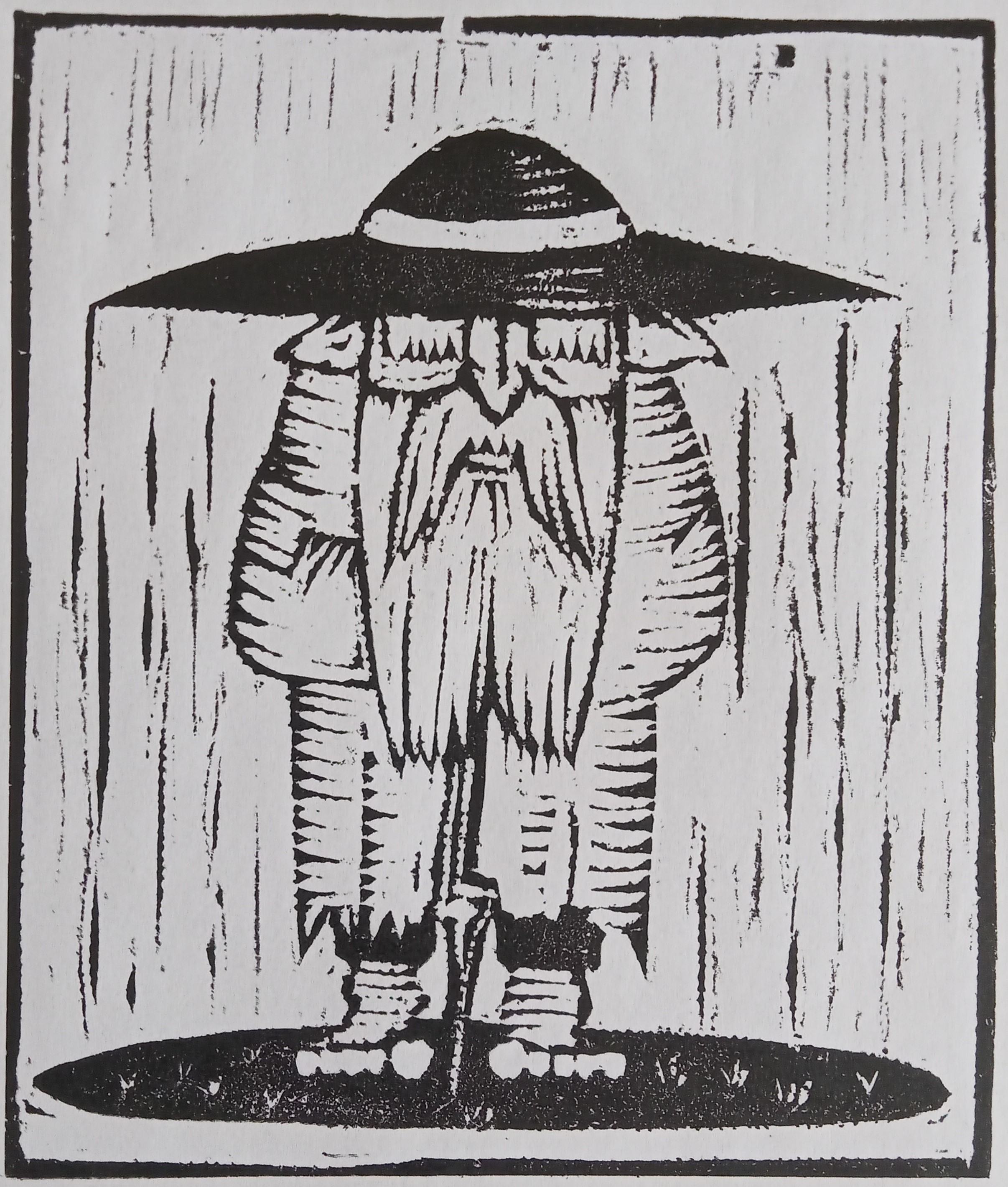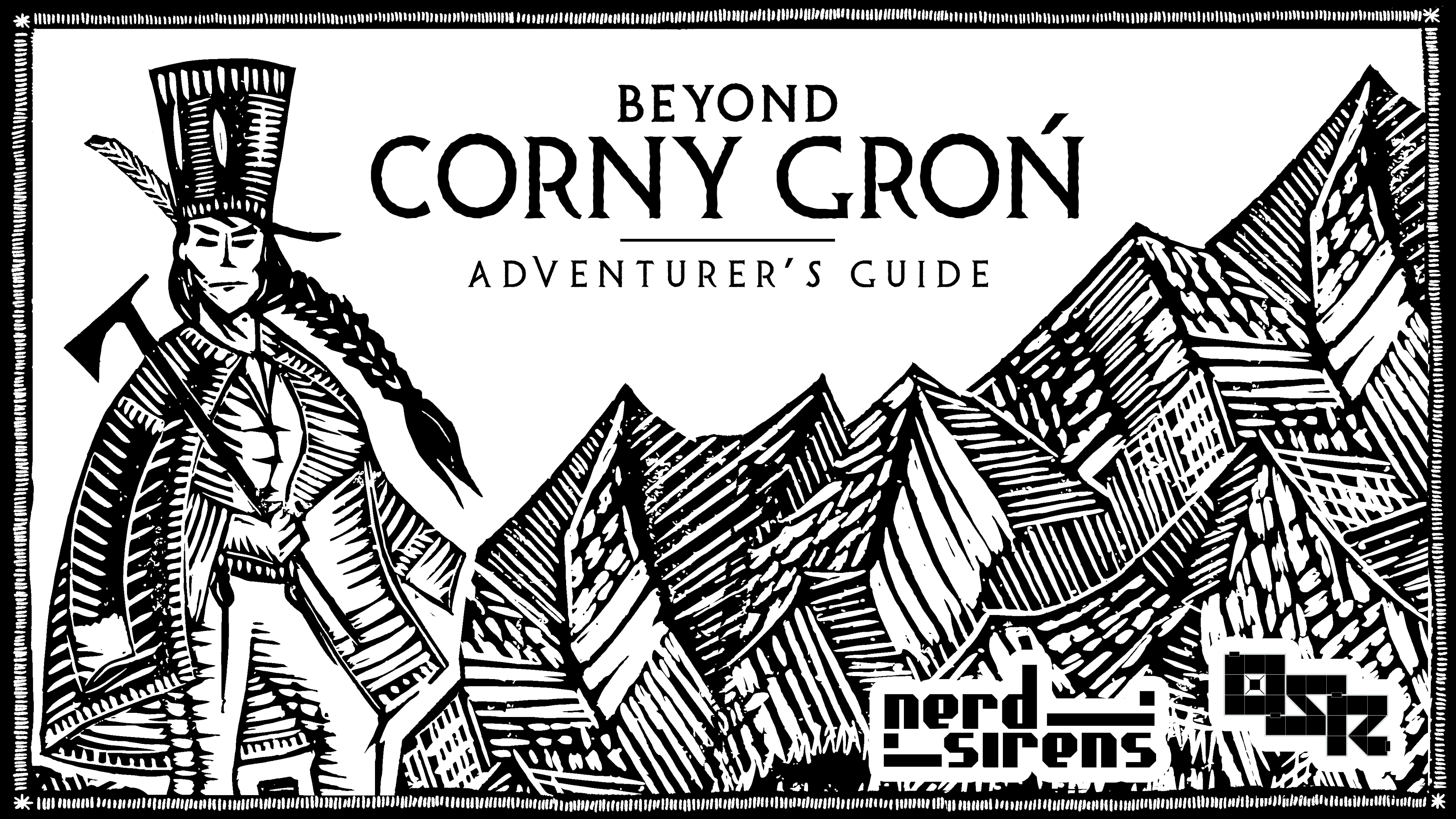New Year's catch-up, new art and some lore!
Hello all!
New Year welcomed us with huge fire - at least in realm of TTRPG. Fortunately, Beyond Corny Groń wasn't meant to be published on OGL anyway, so the latest WotC / Hasbro rascality won't affect us. Of course, the Guide will still be compatible with OSR and games alike - we simply won't use problematic words and phrases. So, all good on this subject.
As for the work on the book itself - I have already finished translating all of the original Polish text, and my translation is now being proofread and edited. At the same time Michał is steadly finishing the layout, and Jacek is sending me more graphics of Karpakian beasts. One captivated me so much that I decided, as an update, to throw you WIP description of this elemental, along with its images.

Weolcaners, or cloudlings, despite being elementals, look very similar to mortals. According to legend, when the Fair Mother was creating humans, many of her initial attempts failed, and various monstrosities were born from clay. In the end, she wept over her own lack of success, and when her tears soaked the clay from which she was sculpting, a weolcaner stood at her feet, as ugly – in the eyes of the Mother – as the previous creations. And he too was rejected by her, but this time the Father Below took pity on the creature, filling him with power and life.
How much truth lay in this story – we do not know, but the fact is that weolcaners are very fond of covering the sun with clouds, and they do it with great enthusiasm, as long as there is enough "material". Usually, they are shorter and stockier than humans, but when they are dressed according to their outsider fashion – that is, in long, dark coats and large, round hats – the only thing that shows their real nature is the rainwater dripping from under the hat and gray eyes interspersed with electric yellow veins. Weolcaners are called "shepherds of storms," and indeed – in addition to their knowledge of simple magic, they can summon violent atmospheric phenomena, including hail or thunderstorms, by herding and mixing together the clouds among which they live.
Because of their abilities, mortals often hate them or, conversely, vie for their favor, which is that difficult to get. Cloudlings love to be pleasantly placated with human delicacies (especially light baked goods such as salty puffs, soufflés and meringues, but also bread dipped in thick soup), are greedy for compliments and basically have good-hearted nature. But woe betide anyone who offends a weolcaner with a grudge about the rain, or worse – accusing him of malice or ill-will without reason. Only then will such a farmer – or the entire settlement – find out just how nasty an angry weolcaner can be. They fall into anger easily and take a long time to come out of it, never really forgetting wrongdoings, even if they forgive them. With multi-week droughts, storms destroying crops or losing herds while they graze - weolcaners undoubtedly greatly affect daily life in the Karpaki Mountains.

Polish name for those storm 'fey' - "płanetnik" - comes from word "płaneta", which is an archaic term for "cloud", but it also happens to be very similar to word "planeta" (which is the same as English planet). So, "płanetnik" is kind of "clouder", but with very archaic and hard to catch connection with the sky.
When I was searching for etymology of "cloud" to track some synonyms I could use, I found out that the old English word for cloud was "weolcan" (and "welkin" meant "sky"). It became immediately clear to me that "weolcaner" will have the same ancient and mystical vibe in English that "płanetnik" have to average Polish speaker.
I think that weolcaner is the bies most frequently mentioned in the book, and I'm super happy that both Ala and Jacek made such beautiful representations of those gloomy fellows!
Get Beyond Corny Groń - Adventurer's Guide
Beyond Corny Groń - Adventurer's Guide
system-neutral toolkit and sandbox generator for role-playing games
| Status | Released |
| Category | Physical game |
| Authors | Nerd Sirens, Kuba Skurzyński |
| Genre | Role Playing |
| Tags | dnd, Fantasy, Folklore, nsr, OSR, Sandbox, Tabletop, toolkit, Tabletop role-playing game |
More posts
- Castle of the Veiled Queen - Beyond Corny Groń adventure module!Feb 06, 2025
- Polish version update / Wieści o polskiej wersjiJul 03, 2024
- Beyond Corny Groń books availableJan 23, 2024
- PDFs updatesDec 10, 2023
- Update#19 - PRINTING!Jun 30, 2023
- Character sheets... for maps!Jun 14, 2023
- Ready to get going? a.k.a. PDF IS READYMay 30, 2023
- ...of cutting, printing, folksy music and obsolete heroesMar 29, 2023
- ...of inspirations and biesyNov 11, 2022

Leave a comment
Log in with itch.io to leave a comment.